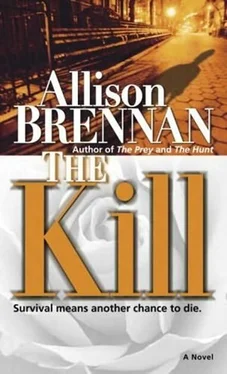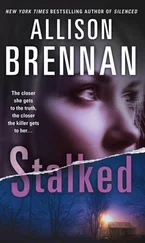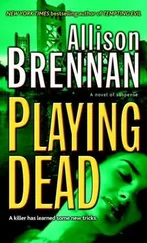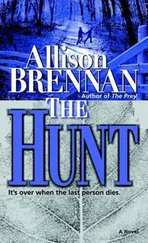“Boyd and I can cover that,” Jan O’Neal said, making notes.
“I have a search set up on the auto-theft database,” Doug interjected, “so if any SUV or covered truck is stolen in King County or the surrounding area, I’m notified. There have been twenty-three reported thefts in the last two days, and Detective Travis has alerted patrols to put them on the priority list.”
“He uses them for transport primarily; he doesn’t kill his victims in the vehicle,” Olivia said. “That amount of blood would be impossible to eliminate completely.”
“But we’ve never found a crime scene,” Zack said. “The bodies are dumped.”
They glanced at each other.
“What about his own property?” Doug interjected. “He would need privacy, so it would be a large parcel. Maybe in the foothills. Someplace that has little or no foot traffic and few neighbors.”
“He’d be in a house, not an apartment,” Olivia said.
Doug nodded. “A place where no one could see him carry a body back and forth from a car into his house.”
“Attached garage or some acreage.”
“Or maybe he takes the victim to a far-off location to kill her, then dumps her body in town,” Zack said.
“Either way we’re looking for a private area,” Pierson agreed.
“Why dump the body in town? He could leave them exposed in the mountains and few people would find them.” Olivia thought about the twelve-year-long Bozeman Butcher investigation. They still hadn’t recovered all the known victims, and probably never would.
“Except for the first victim,” Zack reminded her. He told the room what he and Olivia had discussed about the possible spontaneous first murder, the body left in a more remote location, making a speedy discovery less likely.
No one had a good answer as to why the killer dumped the subsequent bodies in town.
Zack said, “I asked Doug to work with the labs in other jurisdictions where similar crimes occurred, thanks to the information provided by Agent St. Martin. The markings on the victim’s forearm bugged both Doug and me. Neither the coroner nor a cursory search in the criminal database yielded anything close to it.”
“The marks were made postmortem,” Doug said. “Twelve punctures in the victim’s forearm, uniform in appearance.”
Chief Pierson asked, “Does the number twelve mean anything? Is it a count of his victims?”
“We considered that, except that all his victims have the same twelve punctures. Twelve can mean anything-there are twelve apostles in the Bible, twelve is a dozen, it could be the age he thinks his victims are, almost anything,” Doug said.
“That’s why I asked you to contact the Seattle bureau,” Zack said to Pierson. “Agent St. Martin says their research department can look into it and see if it’s significant.”
“But we don’t need to consult with them anymore,” Doug said, “because we figured it out. At least, I think we did.”
“You did,” Zack assured him.
Doug stepped away from a corkboard where three sets of two pictures were posted. Olivia instantly recognized the second picture as being taken with a microscope camera. The cuts, which on the surface looked like punctures-almost like commas-were actually two distinct marks.
“The top pictures are from Michelle Davidson, the middle from Jennifer Benedict, the bottom from a victim in Massachusetts. As you can see, the marks are virtually identical on each victim. Clearly, this ‘signature,’ for lack of a better word, ties our killer with Massachusetts. And the other labs I spoke with have similar files, though many are in storage, as the cases go back twenty or thirty years.”
“Doug has done a fabulous job getting this information,” Zack said. “We have virtually every other jurisdiction working with us on this. We’re getting more information through fax and e-mail, and boxes of evidence shipped to us. But, because of the sensitive nature in dealing with Kansas and Kentucky because they convicted someone for those crimes, we decided not to contact them until we had a suspect in custody. Then we’ll share our information with those departments and they can decide what to do with the prisoners. There may be additional information we’re not privy to.”
“If we can keep the press at bay while we track down this guy, all the better,” Pierson said. “I don’t want to muddy the waters.”
Olivia had been staring at the marks on the victims’ forearms. They appeared to be small holes and lines. Hole, line, line, hole, line, line, hole. Then the pattern changed, if it was a pattern at all. “There are two distinctive marks,” she said. “Like holes and lines, but there doesn’t appear to be a pattern.”
“Very good.” Doug nodded his approval and picked up a metal-tipped pointer. “Actually, it was your information that tipped me off.”
“Mine?”
“You told Detective Travis about the wrongful conviction in California. The guy had a tattoo-similar to the one identified by our witness Sean Miller-and he had served in Vietnam. So I called my dad. He’s eighty-five, but he served in World War II and knows everything about the military. It’s his obsession. We talked about the tattoo, and he said the eagle was a common tattoo for GIs. Then I asked him the question that was bugging me about the marks-that it appears it’s not a pattern and though uniform, looks like dots and lines. He asked me to read off the dots and lines-just like that, ‘Can you read them to me?’ he asked. So I did. And he said, ‘Morse code.’ ”
“ Morse code ?” Olivia said, her mouth dropping open. “He’s marking his victims with Morse code?”
“Morse code was a system of dots and dashes, standard use for telegraphy in the military and other functions, but it’s been phased out since 1979. It’s obsolete now.”
“But in Vietnam it was commonly used,” Pierson said. “That makes sense.”
“In Morse code, each letter is assigned dots and dashes. For example, the letter ‘A’ is dot-dash, the letter ‘B’ is dash-dot-dot-dot, and so on. Because there’s no pause, no break, between the marks on our victims, it took my dad a few minutes to figure it out, but we have a word.”
Doug paused. “Angel.”
Angel ? Olivia mouthed the word. Her heart thudded in her chest as she asked, “What does it mean? Is he signing the bodies? Does angel refer to him? Or is he saying that his victim is now an angel? Or something else entirely?”
“Bingo,” Zack said. “That’s the million-dollar question. Chief, have you called Seattle FBI yet?”
“The bureau chief was in court, but I left all my numbers. He’ll call back. I’ve worked with him in the past.”
“We need to find out what angel means,” Zack said.”Whether it’s his signature, the way he views himself, or whether it references the victim. We also need to get a file for all military discharges, honorable or dishonorable, up until the first murder. Olivia, what happened with your conversation on that old case?”
“The district attorney recently died, but I spoke with the detective in charge of the original investigation and he’s going to track down Hall’s attorney and see when you can talk to him,” Olivia said. “I gave him your contact information and told him it was vital we speak with Hall as soon as possible.”
Zack filled in the rest of the team on the likely connection between a wrongful conviction and the killer.
“We don’t have much time,” Zack told everyone. “If his pattern holds, he’ll kill once more, then disappear. If we don’t get him now, he may not resurface for years.”
Over the years, he’d had a variety of jobs under a variety of names, but his best source of information came from working in restaurants.
Читать дальше











